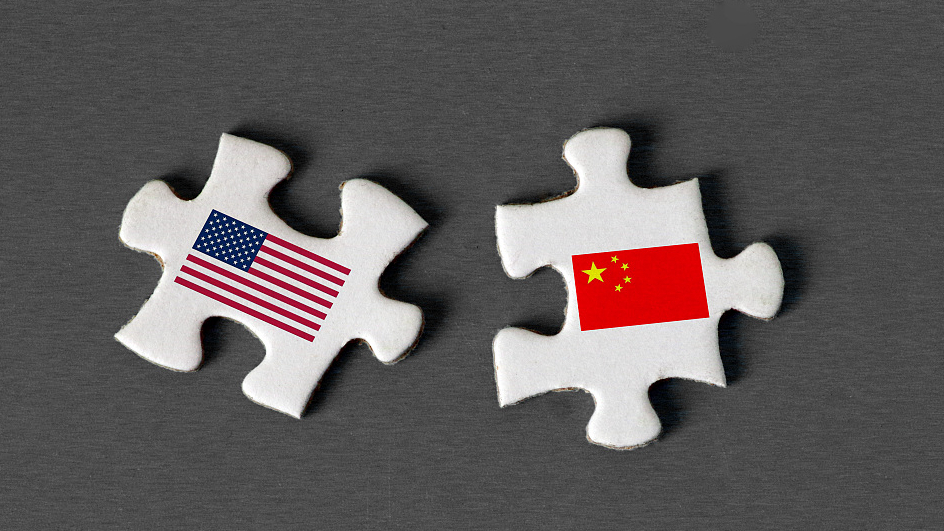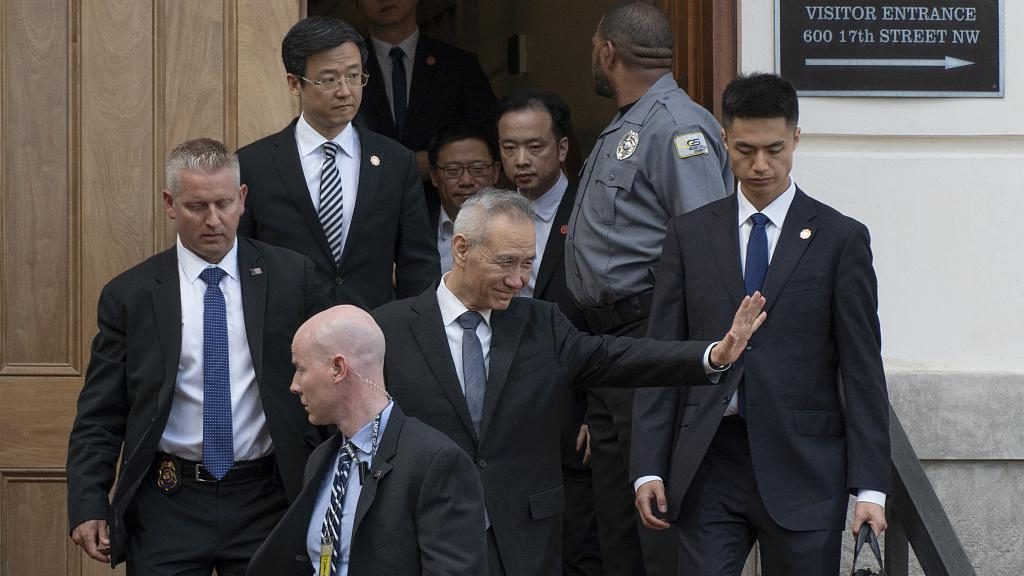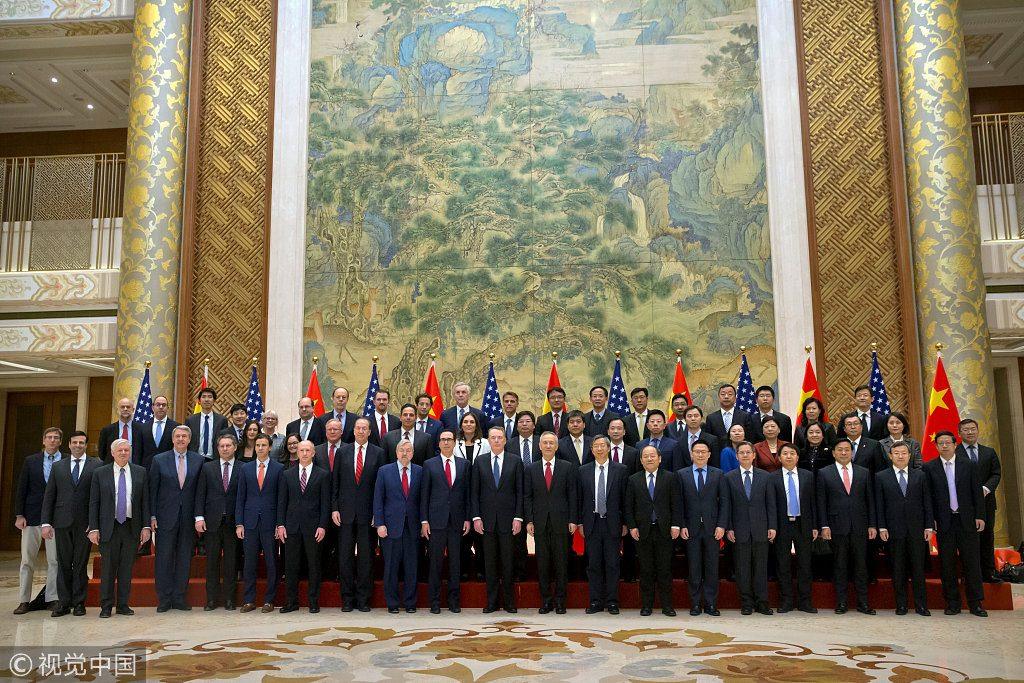
Opinion
22:35, 06-Jun-2019
How will negotiation styles and perception affect China-U.S. trade talks?
Wang Leifan

Editor's note: Wang Leifan is an assistant professor at Tianjin University's Law School. The article reflects the expert's opinion, and not necessarily the views of CGTN.
The current clash of the China-U.S. trade negotiation reflects some notable differences between the negotiation styles and perceptions of both sides, which the negotiators need to be aware of in order to move forward.
On June 2, 2019, the Chinese government issued a White Paper that illustrates the widening gap between the two countries.
The Paper highlights the Chinese government's firm stance against the tariff threat from the Trump administration, stating that the Chinese government wants the talks to be equal, mutually beneficial and trustworthy.
"China has overcome many difficulties and put forward pragmatic solutions. However, the U.S. has backtracked, and when you give them an inch, they want a yard," Vice Commerce Minister Wang Shouwen stated at the press conference on the White Paper.

Chinese Vice Premier Liu He (C) departs the Office of the U.S. Trade Representative in Washington, DC, U.S., May 9, 2019. /VCG Photo
Chinese Vice Premier Liu He (C) departs the Office of the U.S. Trade Representative in Washington, DC, U.S., May 9, 2019. /VCG Photo
On June 3, 2019, the U.S. Trade Representative along with the Treasury Department responded to the Chinese government's White Paper as the start of the blame game.
In their view, following months of hard work in the talks, the two parties had reached agreement on a number of important matters.
While in wrapping up the final important issues in May, the Chinese moved away from previously agreed-upon provisions. To punish the backtracking, U.S. President Donald Trump immediately implemented the previously-announced tariff rate increase to 25 percent on 200 billion U.S. dollars' worth of Chinese imports and announced a new investigation on additional 300 billion U.S. dollars of such imports for a forthcoming tariff increase.
Who is the first backtracker in the negotiation? How could different negotiation styles and perceptions of the two parties impact the progress of the China-U.S. trade negotiation?
In the China-U.S. trade negotiation, it seems that the U.S. negotiators adopted a checklist approach, i.e. they would like to reach agreement on each matter among many matters in the negotiation. By contrast, the Chinese are accustomed to taking a more holistic approach. They would think the negotiation in terms of the whole and be ready to address all related matters simultaneously with no strict order in the negotiation. Under this approach, backtracking is normal and acceptable before the whole negotiation process ends.
A failure to understand the characteristics prevalent in the negotiation styles of each side could lead to unnecessary tension and frustration, let alone the differences in substance.

A group photo of the Chinese and U.S. trade negotiators at Diaoyutai State Guesthouse in Beijing, China, February 15, 2019. /VCG Photo
A group photo of the Chinese and U.S. trade negotiators at Diaoyutai State Guesthouse in Beijing, China, February 15, 2019. /VCG Photo
The two negotiation styles are compatible only if the negotiators of both sides are committed to pursuing a win-win approach and value-adding negotiation. It appears that the Trump administration is doing the opposite. It has initiated massive tariffs on China imports to display its negotiation power. This is part of the "carrot and stick" technique that Americans often employ in negotiation to obtain a concession that they expect from their counter-party.
Unfortunately, the Chinese often view this technique as a betrayal of trust in the negotiation. Once trust is lost, it will be very difficult to restore and sometimes triggers a series of counterproductive actions in return. In facing the massive tariff threat, China has vowed to follow suit and would not make a concession.
It is well known that tariffs can be a bargaining chip for a moment in a trade negotiation, but neither side can afford to continue with such high tariffs in the long term. Even if there are other multiple retaliatory options on the table for both sides, it is time to get out of the blame game and look for more constructive ways to ease the trade tensions between the two nations.
In the cross-cultural negotiation, styles and perceptions of each side to the negotiation could add challenges to the negotiation process. The negotiators need to be aware of the differences and consciously make efforts to shift away from counterproductive retaliation to a display of trustworthiness to continue the negotiation.
After this momentary emotional clash of both sides, hopefully, the different styles and perceptions will not cause the China-U.S. trade negotiation to stagnate unnecessarily, given the significance of the China-U.S. trade relations to the global economy.
(If you want to contribute and have specific expertise, please contact us at opinions@cgtn.com.)

SITEMAP
Copyright © 2018 CGTN. Beijing ICP prepared NO.16065310-3
Copyright © 2018 CGTN. Beijing ICP prepared NO.16065310-3